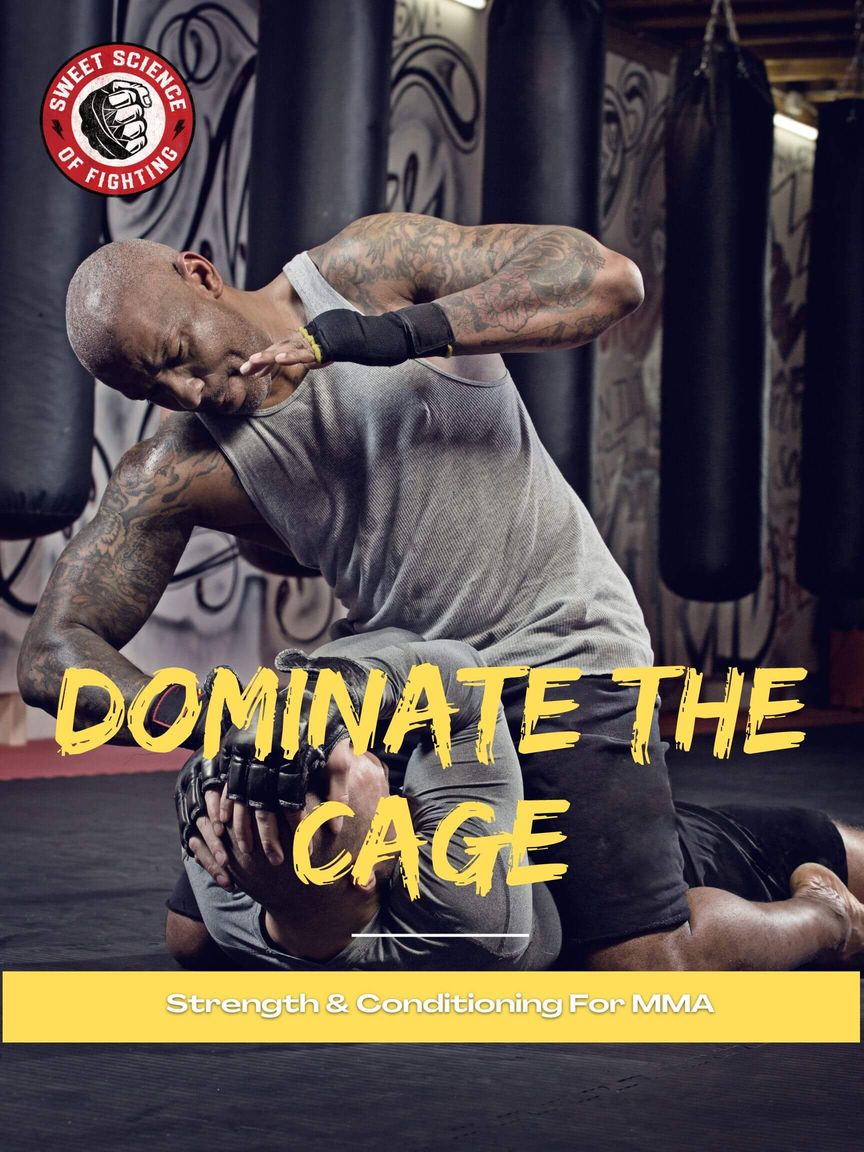Martial arts and running have been intertwined for decades. Running is often the number one choice when it comes to conditioning for a fighter as it’s easily accessible and requires no fancy equipment. But is it your best open to condition for MMA?
Running doesn’t match the biodynamic structure of MMA. Meaning the movement of running is far removed from MMA that it likely won’t transfer to MMA performance.
But surely that’s not the only reason. There are many training modalities that MMA fighters use that don’t exactly match MMA movements. So why just running?
Why You Shouldn’t Run For MMA

To quickly clarify, just because something doesn’t fit an MMA movement doesn’t make it useless. Practically everything that is performed during strength and power training aren’t replicas of MMA techniques, nor should they be.
However, strength training is used to enhance maximal outputs or repeat maximal outputs. In order to do that, external load needs to be used during simple movements that target similar muscular contractions and directions of movement.
Running is used to develop aerobic conditioning. Technical MMA training already does this. So performing more MMA training in various set and rep intervals will target different energy system adaptations specific to the sport.
Technical MMA training doesn’t however enhance maximal strength, power, and speed. Hence why conditioning may be performed using MMA drills while maximal strength, power, and speed work is not.
Lack Of Training Time Means Prioritising What Is Important
MMA has to be the toughest combat sport to plan training for due to the number of qualities that need to be covered in a training week.

How to Dominate Every Fight with Raw, Explosive Power No One Can Match
Discover the underground blueprint that has quietly turned MMA hopefuls into legends, using nothing but sheer, brute force and bulletproof conditioning techniques.
Because of this, performing conditioning exercises that can be done with the sport instead is potentially not a good use of your time. Running is one such modality.
Performing a long duration, steady-state run takes time away from MMA training. If you ran in the morning, then had technical MMA training in the evening, the morning was a missed opportunity to get extra technical training in.
Professional MMA fighters often have up to 10 technical and sparring sessions a week in total [1]. If you trained MMA Monday to Saturday in the evenings, that is 6 total sessions. In the mornings, you may perform your strength training twice a week and some extra conditioning for two to three mornings.
If those conditioning sessions were made up of solo MMA style drills such as shadowboxing and shadow wrestling, you’ve now added three more technical training sessions to your schedule.
Do you think this would help you improve your MMA more so than spending your time running?
Conditioning Isn’t Just About Energy Systems
Conditioning often has a one-eye focus. That is energy system development. We know the importance of enhancing aerobic and anaerobic processes for MMA. That can’t be understated. These processes are what provides us with the energy to fuel the working muscles.
But that is the key distinction. Conditioning should mostly replicate the key movements that emphasise the working muscles during MMA.
As a crude example, above a certain level, performing most training in the form of cycling won’t transfer very well to running or swimming performance.
While cycling will provide the same central adaptations to the heart and lungs, the peripheral adaptations will exclusively occur in the legs. And these adaptations mainly improving the efficiency of the cycling movement.
Unfortunately, when getting in the pool or tying those running shoes, you realise that the work that was performed on the bike leaves you lacking in other activities.
The same parallels can be drawn towards running and MMA. Running prepares your legs for the cyclical running action with many ground impacts. MMA requires footwork, striking, and grappling with another human being.
It makes sense then to prepare as closely to the sport of MMA as possible.
What Should You Do Instead Of Running For MMA?
This is a great example of a technical sparring session:
This kind of training can be performed often as it’s low intensity enough. The same can be done with pure striking or grappling sessions such as this Muay Thai clinch example:
However, you may not always have a partner. In that case, you can put together a circuit of shadowboxing, shadow wrestling, skipping, and medicine ball throws. For example:
Shadowboxing with shots – 20 minutes
Skipping – 10 minutes
An Argument For Running For MMA
While I’ve spent this entire article stating points about why you should stop running as a conditioning modality for MMA, under certain circumstances, there may be some room for it.
The exception would have to fit these criteria:
- A fully professional MMA fighter that doesn’t need as much technical training,
- Have been running most if not all of their life or career so are used to the impact stress,
- Be far away from a fight in a general training phase or transition phase after a fight.
Why these criteria? Because these criteria assume you have the skill set to compete at the highest level and you don’t need to try fit in extra technical training at every waking moment.
If you don’t meet these criteria, I feel you are better off spending more time perfecting your MMA techniques.
Biggest, Baddest Gas Tank In Just 8 Weeks
Dominate The Cage is specifically designed to develop elite level MMA cardio based on your easy to implement test results



